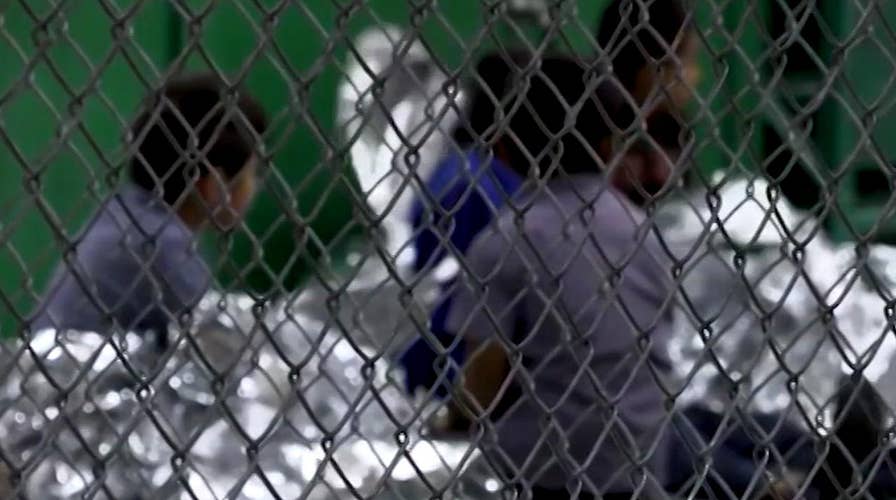Indigenous dialects make asylum process more difficult
Indigenous languages pose challenges for Central American families separated at border seeking asylum
El PASO, Texas – A spike in illegal crossings over the past several years of migrants from Central America has posed a new challenge for immigration officials: how to communicate with a growing number of asylum seekers who speak rare indigenous languages.
Hundreds of indigenous languages are spoken in Guatemala, Honduras and El Salvador, some spoken by only a few hundred, or even dozens, of people. That issue was compounded by the zero-tolerance immigration policy, later reversed, that separated families at the border.
Activists say many young children did not even know the name of the language they spoke, which made critical communication with them almost possible to carry out. The inability to communicate with anyone, activists said, had harmful effects on the children.
“There’s 26 different dialects spoken in Guatemala among the Mayan indigenous population. You’re hearing from social workers that they don’t even know for weeks what dialect it is that the child is speaking and they become really withdrawn,” said Taylor Levy, legal director of Annunciation House in El Paso, Texas, a non-profit that offers services to migrants and refugees.
Even agencies trying to help the children had a difficult time getting through to them because of the language barrier.
“We’ve seen a large number of families that have been reunified who are coming to us with very low Spanish fluency, to the point of almost none,” Levy said.
U.S. immigration authorities have worked hard to attract Spanish-speaking workers who could communicate with migrants entering the border. But the growing number of Central Americans, many of them indigenous, coming in has created a tricky situation at border crossings.
Customs and Border Patrol officials claim they are duly equipped to handle all kind of languages. CBP officials said they don’t encounter indigenous languages in alarming numbers, but definitely with a growing frequency.
“When we do come into these situations, a lot of these people come in groups and they do have a knowledge of Spanish enough to communicate…it is kept very simple, just name, country of citizenship, date of birth, so we can begin the paperwork,” said Fidel Baca, U.S. Border Patrol Agent for the El Paso sector.
If the language barrier cannot be overcome, CBP uses a contracted translation and interpretation service that is reached telephonically in the field for agents to process migrants illegally entering the country. This occurs if an indigenous language is undetectable by the agents in the field upon first contact.
Activists say it also poses issues for migrants in detention because it forces them to blindly sign paperwork.
“What we’re hearing from these parents over and over again is that they signed forms they didn’t understand. They were not explained to them in their native languages. They were explained to them in bad Spanish. Most of the indigenous folks who do not speak Spanish cannot also read and write,” Levy said.
U.S. Immigration and Customs Enforcement does have a Language Access Plan that was formally approved in 2015, and is still in place, according to ICE spokesperson Danielle Bennet.
During initial processing, ICE identifies those with Limited English Proficiency (LEP) – individuals in custody for whom language services are not readily available – as well as the points of interaction requiring language services. As of March 2015, the following Mayan dialects are represented within the ICE family residential facilities: Quiche (K’iche), Mam, Achi, Ixil, Awakatek, Jakaltek (Popti), and Qanjobal (K’anjob’al).
When illegal immigrants shows up to court for their hearing, the Executive Office for Immigration Review tries to provide an interpreter. In a statement to Fox News, the office, which is overseen by the DOJ, said it offers interpreter services for approximately 350 languages.
“There may be instances, on occasion, in which the immigration court may not have available an indigenous-language interpreter,” the office said in a statement. “In this situation, depending on the circumstances, the immigration court may submit a scheduled telephonic or in-person interpreter order for the next hearing.”
There were reports during the child separation controversy that released detainees were being forced to sign English-language paperwork they did not understand.
“They’re saying immigration took me into their room and told me I had to sign this piece of paper. They said I had to sign this piece of paper or I would never see my child again,” Levy said.
Officials from Health and Human Services and Homeland Security deemed 711 children were not eligible to be reunited to their parents by the July 26 court deadline. This was due to a number of extenuating circumstances, including the parent waiving reunification or a red flag indicating a possible criminal history.


